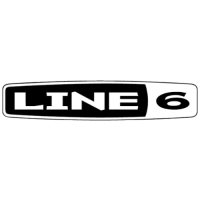Controls & Connections
1•4
11
Direct Output/Phones – OK, this should be easy. This is a stereo 1/8-inch
output for headphones, a P.A. or recording device.
12
DC Input – You can power Pocket POD here using the optional Line 6 DC-1
external power supply. The optional DC-1 provides 9.6 volts DC, 200 mA and has center-
negative polarity.
13
Guitar In – Dude, plug in here. You should use only a standard, 1/4-inch mono
guitar cable.
You’ll notice that there is no power switch on Pocket POD. This is it! When you plug in,
Pocket POD will automatically power-up. To extend the life of your batteries, it’s a good
idea to unplug your guitar cable when you’re not using it for a long time.
14
USB – You can connect Pocket POD to your Macintosh or Windows computer
via the included USB cable and it’ll automatically show up as a MIDI device. No drivers
are needed!
The USB connection also acts as a power switch – as long as you have batteries installed
or the DC-1 power supply connected, Pocket POD will come to life when you connect
it to your computer via USB. However, keep in mind that the USB connection does
NOT power or recharge your Pocket POD, so for maximum battery life, make sure and
disconnect the USB cable when you’re not using it for a long time.
For tweak heads, the Vyzex Pocket POD editor/librarian software is available as a
free download from www.line6.com/software. The program runs on Macintosh and
Windows computers, and can turn your computer into a Pocket POD command station.
It let’s you take “full control”, and do everything that can be done from your Pocket

